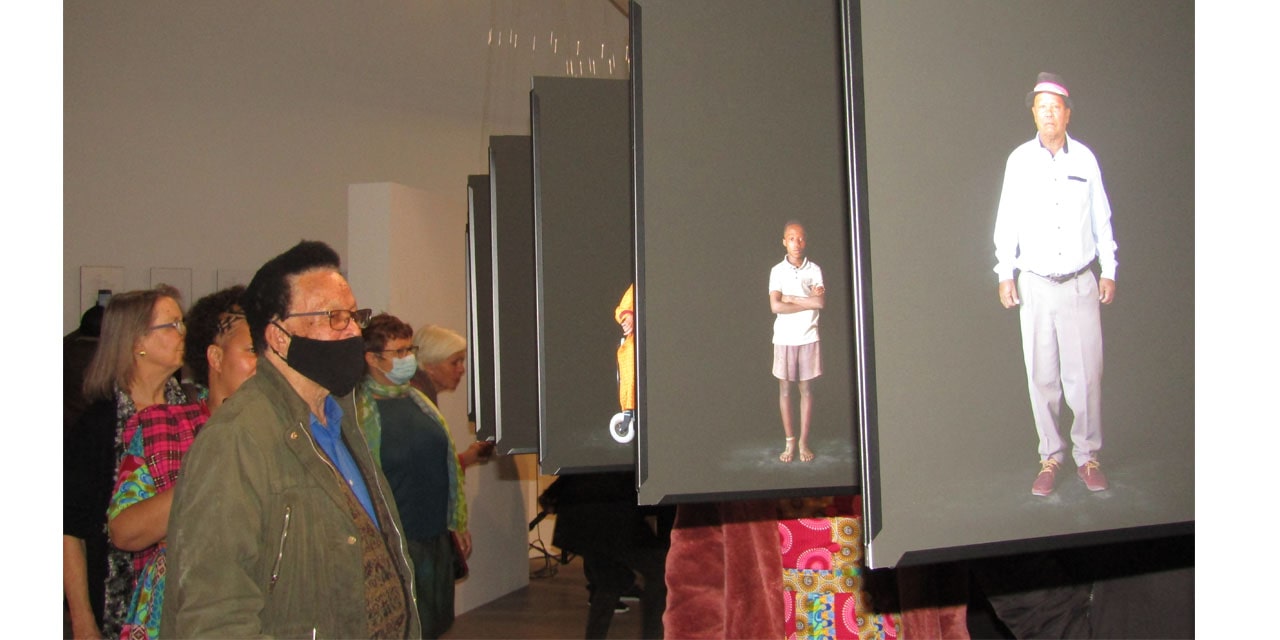Staff Writer
“ONDJEMBO YO NULL VIER” is the title of the exhibition by a German national, which opened on Thursday at the National Art Gallery of Namibia (NAGN).
It is not accidental that the exhibition has been titled as such with “Ondjembo” meaning gun in Otjiherero and “Null Vier” being reference in German to 1904. Thus the exhibition is about the wars of the indigenous Ovaherero, Ovambanderu and Nama people during which they fought intense battles fought.
The 1904 to 1908, years are ordinarily but erroneously came to the associated with the battles of the indigenous against German colonialism, and even their genocide, while genocide factually dates back to Aril 1893 with colonial Germany’s attack on the Witboois at Hornkranz.
Lining up and adoring the gallery are a series of portraits of Ovaherero, Ovambanderu and Nama. To the naked eye and to the uninitiated on the colonial history of Germany in the then South West Africa, the portraits may appear to be just social images of indigenous Namibians. But this is far from the case. These are descendants of the forebears who bore the brunt of German brutalities during the colonial era, who to this day carry the scars of these brutalities.
As Ixmucane Aguilar, the artist explains, “Beyond the images lies reality…beyond the portraits stands the human…and beyond all the words is wisdom.” Because each and every one in each and every portrait has a story to tell about the wars which her/his forebears endured. A tale being told not necessary out of pride but as means of expiation from the transgenerational trauma most of the
descendants of the victims of genocide, and thus victims themselves, endure and still need healing from. As Aguilar established through her interaction with her artistic subjects “from these personal encounters emerge portraits and narratives as documental fragments, consisting of living voices which insist on defending memory as an invocation to witness and never to remain passive in the face of social injustice.”
One cannot but wonder how, where and when those in the portraits may have had their voices heard regarding the Joint Declaration (JD) between the Namibian government and its German counterparts, passive as they may have. Until with this exhibition, which brings home the point that the negotiation table, or any other platform, is only but a fraction of a plethora of platforms
where and through which many others other than state actors, can have their influence to bear on the issue of the acknowledgement by Germany of the genocide of the Nama, Ovambanderu and Ovaherero, if the state actors would only care to take heed and take cognisance of the voiceless and passive.
The opening of the exhibition coincided with a talk featuring genocide descendant and sociologist Dr Ellison Tjirera, genocide descendant and activist, Sima Luiperd, and human rights lawyer from Germany, Wolfgang Kaleck, from the Berlin-based European Centre for Constitutional and Human Rights (ECCHR). Among others the question of memory politics came into focus, especially the lack of memorial sites in Namibia related to the genocide, thus dovetailing with the exhibition, the essence thereof which is to memorialise the genocide.
Poets, Kamaazengi Marenga, a Botswana diaspora descendant of genocide, and Nesindano Namises could not but crown the occasion with their artistry.
Aguilar is a Berlin-based visual artist. Born in political exile during the civil war in Guatemala, on her mother’s side, she is a descendant of the Afro-Caribbean diaspora.
The exhibition runs until 8 August.




